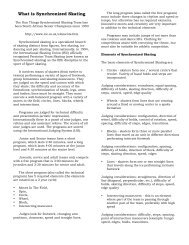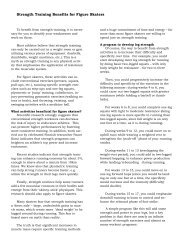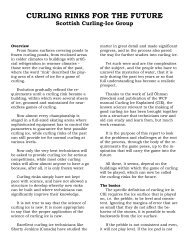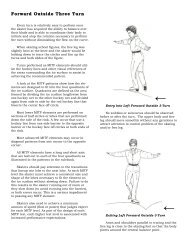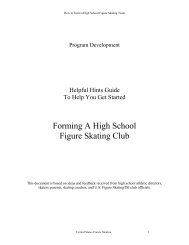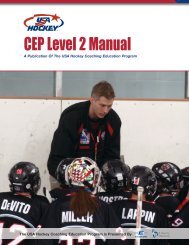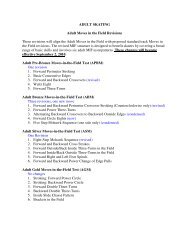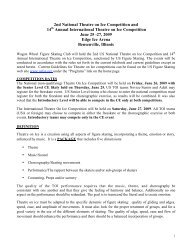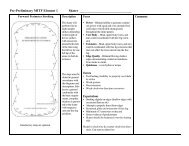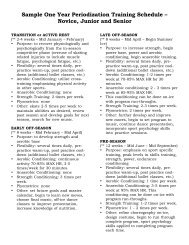CEP Level 3 Manual - Rushmore Hockey Association
CEP Level 3 Manual - Rushmore Hockey Association
CEP Level 3 Manual - Rushmore Hockey Association
Create successful ePaper yourself
Turn your PDF publications into a flip-book with our unique Google optimized e-Paper software.
T A B L E O F C O N T E N T SOffensive ResponsibilityDCOVERAGEZONEBACKCHECKZONEFORECHECKZONEChapter 21Gap ControlBreakout Zone1. Move puck quickly up ice2. Puck carrier is between the face-off dotswhen making breakout passNeutral Zone1. Strong-side defenseman, after making pass,follows up play inside the seams2. Weak-side defenseman is last player to leavethe zone and moves up the middleAttack Zone1. Strong-side defenseman moves to top ofcircle2. Weak-side defenseman moves to just insideblue line252 | USA <strong>Hockey</strong> Coaching Education Program <strong>Level</strong> 3 <strong>Manual</strong>OBJECTIVES• Provide a basic understanding of gap control• Review the governing principles of hockey• Describe the effects of gap control offensively and defensivelyGap control involves a high level of skill,intelligent decision making, discipline and theproper mental attitude. Perhaps the most importantthing is to have coaches create practiceenvironments which will continually improve theoverall skill level, encourage problemsolving/decision making and develop the propermental approach.This chapter will give a practical overview ofsuggestions and techniques in teaching “gapcontrol” for forwards and defensemen, as well asaddress its common components.It is absolutely essential that a coach gets backto the basics and reviews a few commoncomponents influencing gap control.DefinitionGap control is defined as the spacial relationshipbetween an offensive opponent and a defensiveopponent.Types of Gaps• Tight Gap: players within a sticklength of each other.• Loose Gap: players more than a sticklength apart.Governing Principles• Pressure (defensive): defensive speedcreating pressure on the offensive playerreducing the time, space and force of theattack.• Pressure (offensive): offensive speedcreating pressure on the defensive playercreating time, space and force for the attack.• Stall/Contain (defensive): an attempt to forcean opponent to stop or slow down the speedof an attack to provide time to set up betterdefensive coverage.• Stall/Contain (offensive): an attempt to tochange the speed of the attack to providetime and space to set up better offensiveoptions.• Support (offensive/defensive): players awayfrom the puck involving themselves as anoffensive option to an attack or a defensivedeterrent to an attack.• Transition: the ability of players to movequickly from defense to offense; or offense todefense.Defensive Team Tactics | 253



